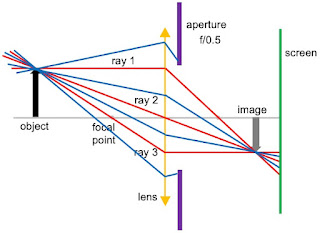Edward “Joe” Redish, a University of Maryland physics professor, died August 24 of cancer. Joe has been mentioned many times in this blog (here, here, here, and here). He was deeply interested in how students—and in particular biology students—learn physics, an interest with obvious relevance to Intermediate Physics for Medicine and Biology.
 |
| Redish, E. F., “Using Math in Physics: 7. Telling the Story,” Phys. Teach., 62: 5–11, 2024. |
Even if students can make the blend—interpret physics correctly in mathematical symbology and graphs—they still need to be able to apply that knowledge in productive and coherent ways. As instructors, we can show our solutions to complex problems in class. We can give complex problems to students as homework. But our students are likely to still have trouble because they are missing a key element of making sense of how we think about physics: How to tell the story of what’s happening.In an oral history interview with the American Institute of Physics, Joe talked about using simple toy models when teaching physics to biology students.
We use math in physics differently than it’s used in math classes. In math classes, students manipulate equations with abstract symbols that usually have no physical meaning. In physics, we blend conceptual physics knowledge with mathematical symbology. This changes the way that we use math and what we can do with it.
We use these blended mental structures to create stories about what’s happening (mechanism) and stabilize them with fundamental physical laws (synthesis).
One of the problems that students run into, that teachers of physics run into teaching biology students, is we use all these trivial toy models, right? Frictionless vacuum. Ignore air resistance. Treat it as a point mass. And the biology students come in and they look at this and they say, “These are not relevant. This is not the real world.” And they know in biology, that if you simplify a system, it dies. You can’t do that. In physics we do this all the time. Simple models are kind of a core epistemological resource for us. You find the simplest example you possibly can and you beat it to death. It illustrates the principle. Then you see how the mathematics goes with the physics. The whole issue of finding simple models is where a lot of the creative art is in physics.
 |
| Redish and Cooke, “Learning Each Other’s Ropes: Negotiating Interdisciplinary Authenticity” CBE—Life Sciences Education, 12:175–186, 2013. |
From our extended conversations, both with each other and with other biologists, chemists, and physicists, we conclude that, “science is not just science.” Scientists in each discipline employ a tool kit of different types of scientific reasoning. A particular discipline is not characterized by the exclusive use of a set of particular reasoning types, but each discipline is characterized by the tendency to emphasize some types more than others and to value different kinds of knowledge differently. The physicist’s enthusiasm for characterizing an object as a disembodied point mass can make a biologist uncomfortable, because biologists find in biology that function is directly related to structure. Yet similar sorts of simplified structures can be very powerful in some biological analyses. The enthusiasm that some biologists feel toward our students learning physics is based not so much on the potential for students to learn physics knowledge, but rather on the potential for them to learn the types of reasoning more often experienced in physics classes. They do not want their students to think like physicists. They want them to think like biologists who have access to many of the tools and skills physicists introduce in introductory physics classes… We conclude that the process is significantly more complex than many reformers working largely within their discipline often assume. But the process of learning each other’s ropes—at least to the extent that we can understand each other’s goals and ask each other challenging questions—can be both enlightening and enjoyable. And much to our surprise, we each feel that we have developed a deeper understanding of our own discipline as a result of our discussions.
You can listen to Joe talk about physics education research on the Physics Alive podcast.
We’ll miss ya, Joe.




















